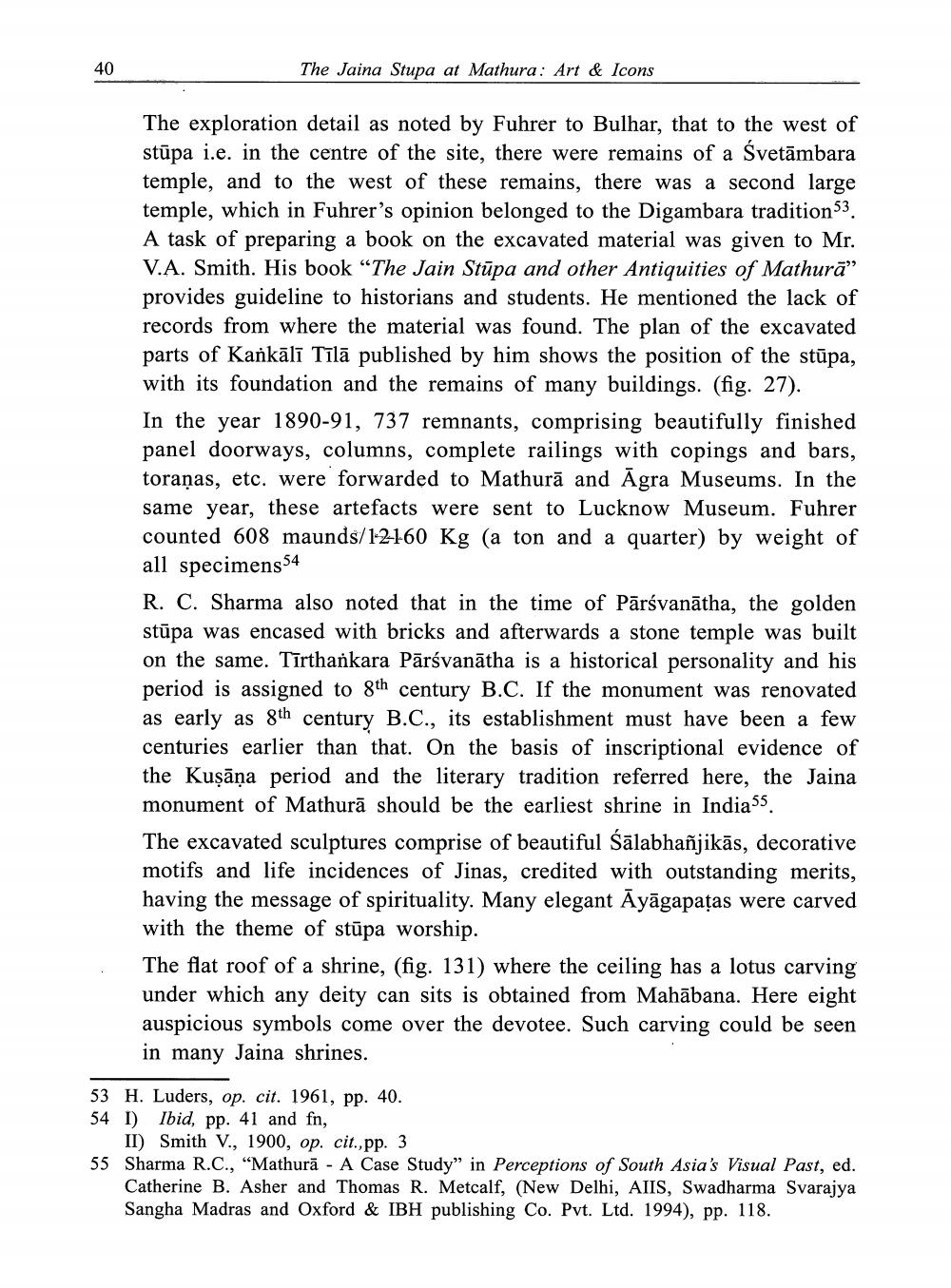________________
40
The Jaina Stupa at Mathura: Art & Icons
The exploration detail as noted by Fuhrer to Bulhar, that to the west of stūpa i.e. in the centre of the site, there were remains of a Svetämbara temple, and to the west of these remains, there was a second large temple, which in Fuhrer's opinion belonged to the Digambara tradition$3. A task of preparing a book on the excavated material was given to Mr. V.A. Smith. His book "The Jain Stupa and other Antiquities of Mathura" provides guideline to historians and students. He mentioned the lack of records from where the material was found. The plan of the excavated parts of Kankālī Tīlā published by him shows the position of the stupa, with its foundation and the remains of many buildings. (fig. 27).
In the year 1890-91, 737 remnants, comprising beautifully finished panel doorways, columns, complete railings with copings and bars, toranas, etc. were forwarded to Mathura and Agra Museums. In the same year, these artefacts were sent to Lucknow Museum, Fuhrer counted 608 maunds/12-160 Kg (a ton and a quarter) by weight of all specimens34
R. C. Sharma also noted that in the time of Pārśvanatha, the golden stūpa was encased with bricks and afterwards a stone temple was built on the same. Tirthankara Pārsvanatha is a historical personality and his period is assigned to 8th century B.C. If the monument was renovated as early as 8th century B.C., its establishment must have been a few centuries earlier than that. On the basis of inscriptional evidence of the Kuṣāṇa period and the literary tradition referred here, the Jaina monument of Mathura should be the earliest shrine in India55.
The excavated sculptures comprise of beautiful Śālabhanjikās, decorative motifs and life incidences of Jinas, credited with outstanding merits, having the message of spirituality. Many elegant Ayagapatas were carved with the theme of stupa worship.
The flat roof of a shrine, (fig. 131) where the ceiling has a lotus carving under which any deity can sits is obtained from Mahābana. Here eight auspicious symbols come over the devotee. Such carving could be seen in many Jaina shrines.
53 H. Luders, op. cit. 1961, pp. 40.
54 I) Ibid, pp. 41 and fn,
II) Smith V., 1900, op. cit., pp. 3
55 Sharma R.C., "Mathura - A Case Study" in Perceptions of South Asia's Visual Past, ed. Catherine B. Asher and Thomas R. Metcalf, (New Delhi, AIIS, Swadharma Svarajya Sangha Madras and Oxford & IBH publishing Co. Pvt. Ltd. 1994), pp. 118.




